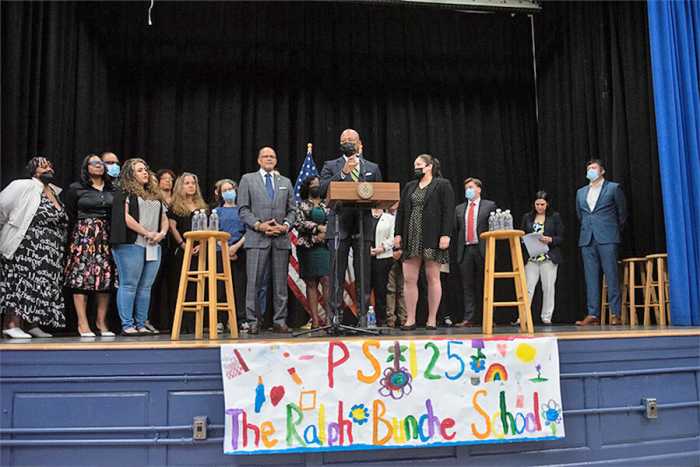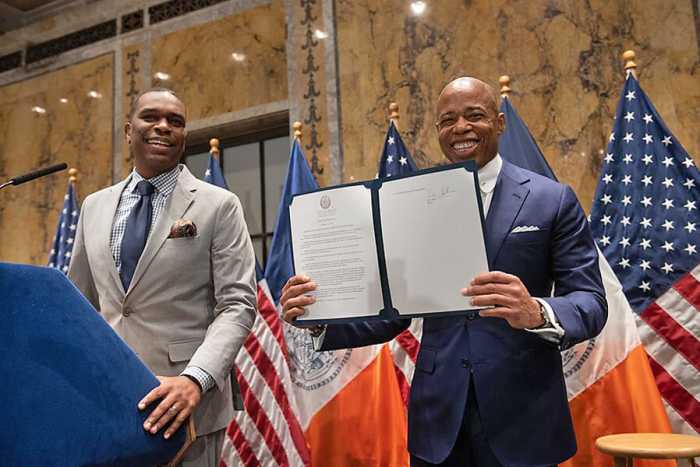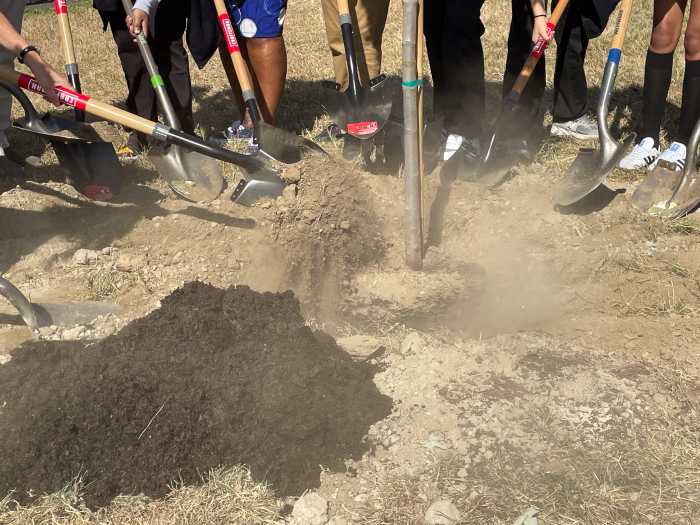New York City Mayor, Eric Adams on Tuesday released “Housing Our Neighbors: A Blueprint for Housing and Homelessness,” his comprehensive blueprint to tackle New York City’s affordable housing crisis and “get New Yorkers in the safe, high-quality, affordable homes they deserve.”
Crafted in direct collaboration and coordination with New Yorkers who have experienced homelessness, Adams’ plan represents the first city housing plan to build on the creation and preservation of affordable housing with transformative reforms for the New York City Housing Authority (NYCHA), as well as the elimination of paperwork and processes that retraumatize New Yorkers and families as they find a home they can afford.
“Today is a new day for housing in New York City,” said Adams. “Safe, stable, and affordable housing cannot be a privilege — it is fundamental to my vision for a prosperous, inclusive city.
“We spoke with and listened to New Yorkers who have been impacted by the housing crisis in our city, and, today, we are delivering the most comprehensive plan in New York City’s history,” he added.
The blueprint is the result of an extensive stakeholder, industry, and community engagement process, which, for the first time, included direct engagement with New Yorkers who are experiencing or having experienced homelessness, and outlines major steps the Adams administration will take to significantly expand affordable homeownership opportunities and help communities build and maintain wealth; accelerate the creation of supportive housing by completing the 15,000 supportive homes promised by 2030 two years ahead of schedule; and transform NYCHA by both delivering much-needed resources for repairs and improving, and streamlining the services NYCHA provides residents and the processes by which they do so.
The plan will also break down government siloes to bolster transparency and address the full scope of the homelessness crisis, adding to the city’s homeless count while creating a more even playing field to give more New Yorkers in all the city’s shelter systems access to critical services and resources; and get New Yorkers into safe, high-quality, affordable homes faster and without forcing them to relive past trauma by eliminating unnecessary paperwork and obstacles to obtaining housing.
“Housing is the basis for everything we are trying to achieve, from helping children succeed in school to building safer communities and a more equitable city,” said Chief Housing Officer Jessica Katz. “This is an incredible moment where we can rebuild in a more intentional, people-centric way that helps New Yorkers access the housing and services they need faster.
“This starts with measuring how quickly we move people into homes and how many New Yorkers we house — that is our priority, housing New Yorkers, and this plan reflects that,” she added. “By including NYCHA and homelessness for the first time ever, we are elevating directly impacted New Yorkers into the heart of our housing strategies to ensure that everyone finally receives the safe, stable, and affordable housing they and their families deserve. This blueprint will help us get there.”
The blueprint rests on five key pillars: Transforming NYCHA; addressing Homelessness and Housing Instability; Creating and Preserving Affordable Housing; Improving the Health and Safety of New Yorkers; and Reducing Administrative Burden.
“Housing Our Neighbors” represents the Adams administration’s strategy to tackle the housing shortage at the root of our city’s affordable housing crisis.
According to the 2021 Housing and Vacancy Survey initial findings, only 4.5 percent of the city’s housing supply currently sits vacant, with less than 1 percent of homes available for rent at below $1,500 per month currently available.
A New Yorker making the city’s median income would need to earn twice as much to afford the median asking rent of $2,750, and the level of rent burden and severe rent burden have remained stubbornly high since 2011.
Additionally, half of the city’s renting households spent more than 30 percent of their income on rent, and one in three of those households spent over half of their income on rent.
Adams’ housing blueprint builds on the city’s Fiscal Year 2023 adopted budget, which includes $5 billion in new capital funding for affordable housing, bringing the administration’s planned investment in affordable housing to $22 billion — the largest in the city’s history.
Earlier this month, Adams also laid out his plan to make New York City a “City of Yes!,” with three citywide zoning reforms, including one that will help tackle the city’s housing shortage and create affordable housing.


























